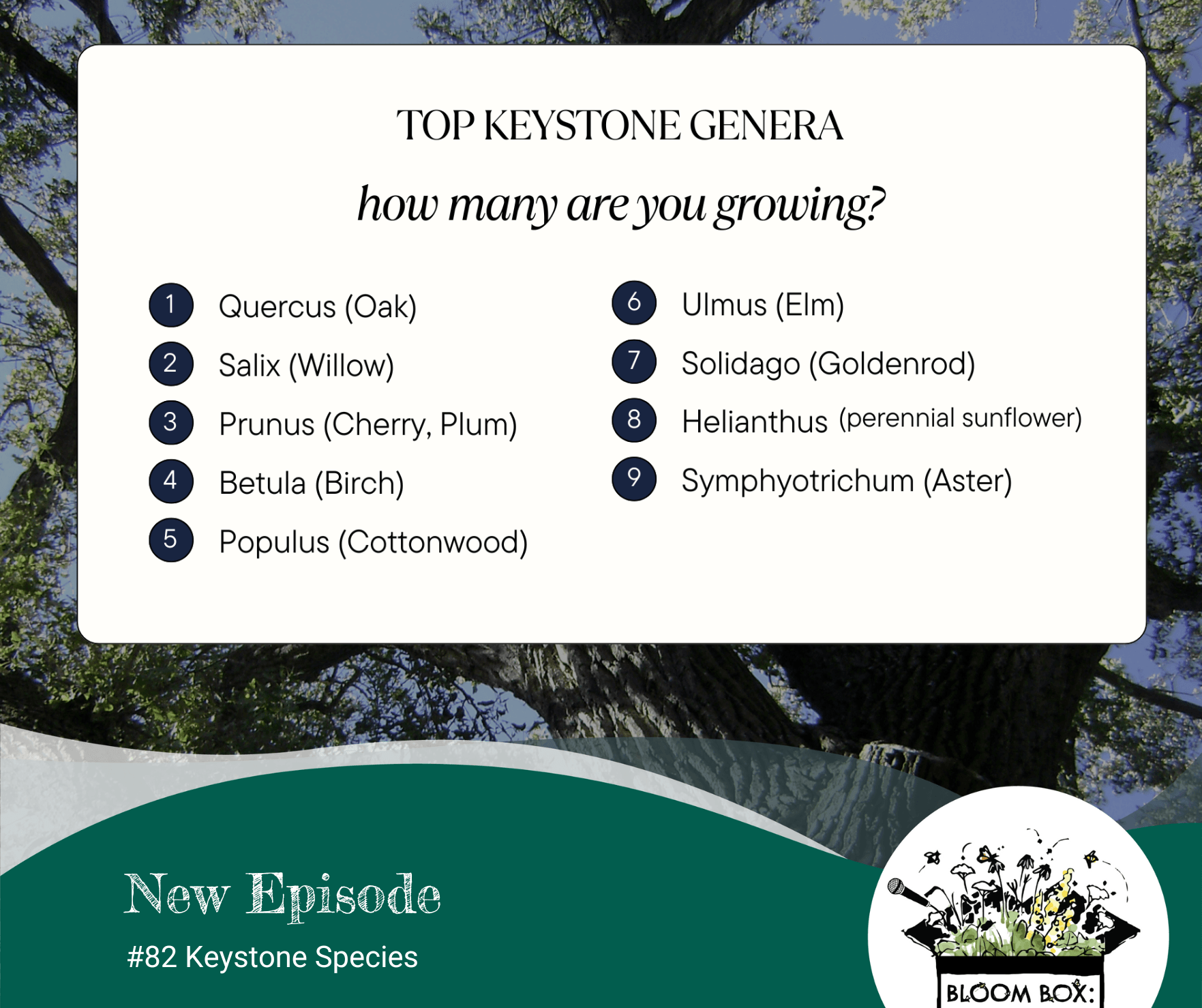
This week, we're Growing Deeper into a topic introduced in an episode of our Plant Talk webinar series (watch here). Keystone species, an idea discussed by entomologist Doug Tallamy in several of his books, are a foundation of healthy, functioning habitat. Today we're discussing some of the keystone species of the Great Plains and how understanding this theory impacts the way we design urban greenspaces.
Top 9 Keystone Genera (look for species native to your area):
- Quercus (Oak)
- Salix (Willow)
- Prunus (Cherry, Plum)
- Betula (Birch)
- Populus (Cottonwood)
- Ulmus (Elm)
- Solidago (Goldenrod)
- Helianthus (Perennial Sunflower)
- Symphyotrichum (Aster)
Lepidopetera supported by native trees (source: Doug Tallamy)
- Oak (Quercus spp) – 517
- Willow (Salix spp) – 456
- Cherry (Prunus spp) – 448
- Cottonwood (Populus) – 368
- Crabapple (Malus spp) – 311
- Maple (Acer spp) – 285
- Elm (Ulmus spp) – 213
- Ornamental Pear = 0
NSA Plant Talk on Keystone Species: Oaks, Willows, and Prunus
Doug Tallamy PhD, professor at the University of Delaware, was a primary source for much of this podcast.
Doug Tallamy's interview on Keystone Species for the Let's Argue About Plants podcast
Add your garden to the Homegrown National Park registry.
Find the ecoregion you live in, see the 3 regions that cover Nebraska below.
Top woody keystone species:
Top flowering keystone species:

